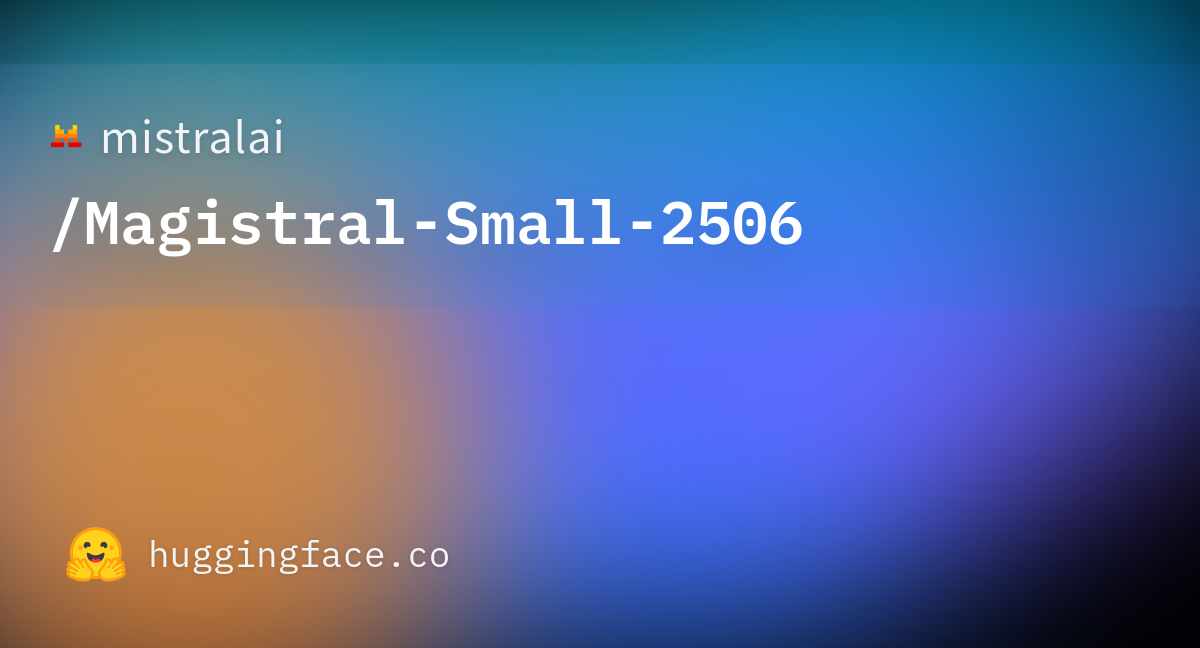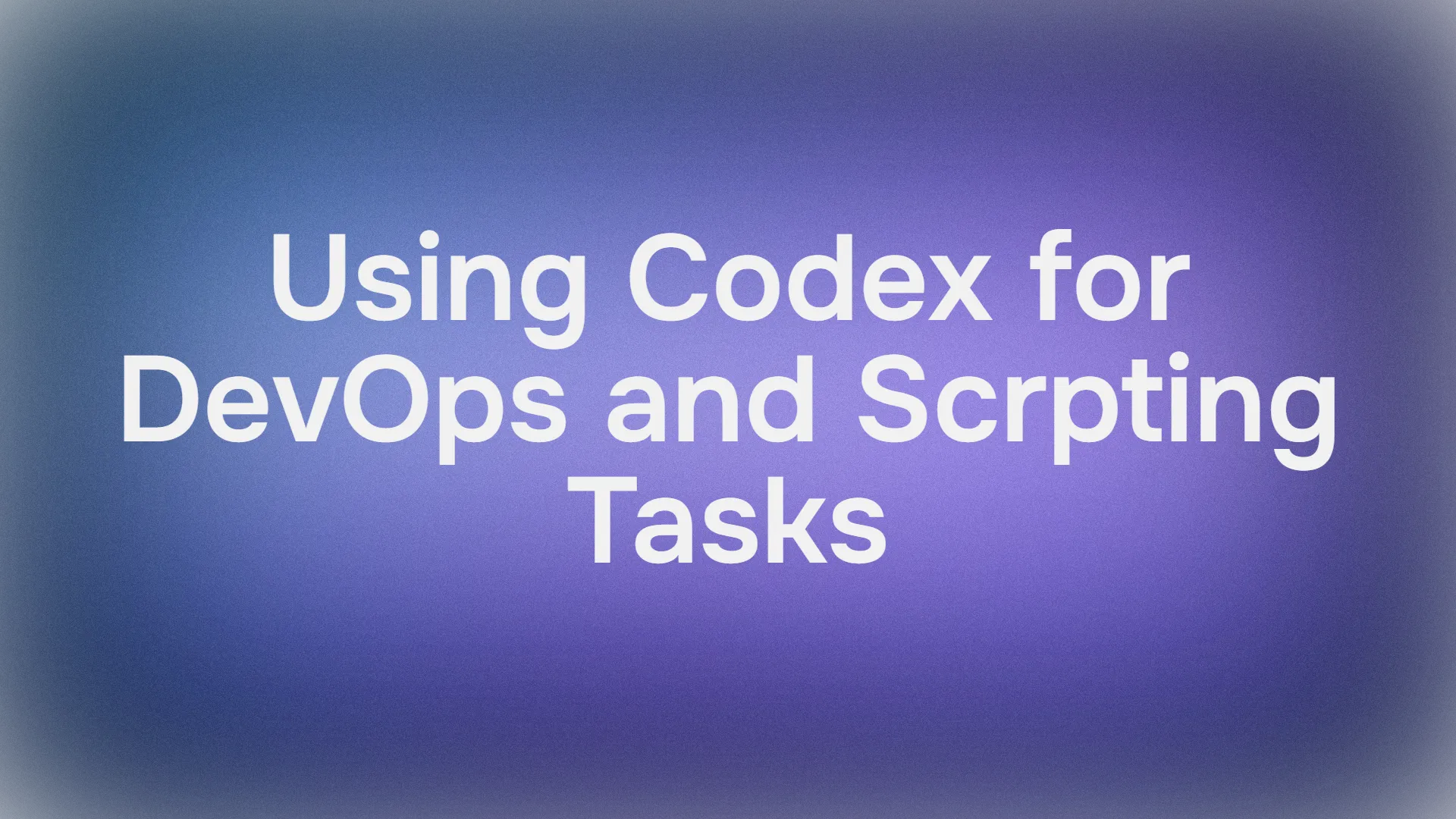Mistral AI has unveiled Magistral, a groundbreaking reasoning model that represents a significant leap forward in artificial intelligence capabilities. This innovative model introduces sophisticated chain-of-thought reasoning processes, multilingual expertise, and transparent problem-solving methodologies that address many limitations of traditional language models. Released in both open-source and enterprise variants, Magistral demonstrates exceptional performance across diverse domains while maintaining interpretability and auditability.
Want an integrated, All-in-One platform for your Developer Team to work together with maximum productivity?
Apidog delivers all your demands, and replaces Postman at a much more affordable price!
Technical Architecture and Specifications


Magistral builds upon the robust foundation of Mistral Small 3.1 (2503), incorporating advanced reasoning capabilities through sophisticated supervised fine-tuning and reinforcement learning techniques. The model architecture centers around a 24-billion parameter configuration for the Small variant, designed to fit efficiently within consumer hardware constraints while delivering enterprise-grade performance.
The technical implementation leverages a dual-release strategy. Magistral Small, the open-source version, contains 24 billion parameters and can operate effectively on a single RTX 4090 GPU or a 32GB RAM MacBook when properly quantized. This accessibility makes advanced reasoning capabilities available to researchers, developers, and organizations with modest computational resources.
The enterprise Magistral Medium variant offers enhanced capabilities with a more powerful parameter configuration, though specific architectural details remain proprietary. Both versions share core reasoning methodologies while differing in scale and computational requirements.
The model features a 128,000-token context window, though optimal performance occurs within the first 40,000 tokens. This extensive context capability enables processing of complex, multi-step problems requiring substantial background information and intermediate reasoning steps.
Advanced Reasoning Methodology
Magistral's reasoning capabilities represent a fundamental departure from traditional language model approaches. The model employs a structured thinking process that mirrors human cognitive patterns, weaving through logic, insight, uncertainty, and discovery phases. This methodology enables transparent, traceable problem-solving that users can follow and verify step-by-step.
The reasoning framework utilizes a specialized chat template incorporating a thinking process structure. The system prompt guides the model to first draft its thinking process as an internal monologue, working through problems like solving exercises on scratch paper. This approach allows for casual, extended deliberation until the model reaches confident conclusions.
The technical implementation requires specific sampling parameters for optimal performance: top_p set to 0.95, temperature at 0.7, and maximum tokens configured to 40,960. These parameters balance creativity and consistency while ensuring comprehensive reasoning traces.
The reasoning process follows a structured template where the model encapsulates its thinking within designated tags, followed by a concise summary reflecting the reasoning path and presenting clear final answers. This dual-layer approach ensures both detailed problem-solving transparency and user-friendly result presentation.
Performance Benchmarks and Evaluation

Magistral demonstrates exceptional performance across challenging evaluation benchmarks. On the American Invitational Mathematics Examination 2024 (AIME24), Magistral Medium achieves a 73.59% pass rate with single attempts, escalating to 90% success with majority voting across 64 attempts. Magistral Small maintains competitive performance with 70.68% single-attempt success and 83.3% with majority voting.
The 2025 AIME benchmark reveals continued strong performance, with Magistral Medium scoring 64.95% and Magistral Small achieving 62.76% success rates. These results demonstrate consistent mathematical reasoning capabilities across different problem sets and time periods.
On the Graduate-Level Google-Proof Q&A (GPQA) Diamond benchmark, designed to test expert-level scientific reasoning, Magistral Medium scores 70.83% while Magistral Small achieves 68.18%. These scores indicate sophisticated understanding of complex scientific concepts and reasoning patterns.
LiveCodeBench version 5 evaluations, which test programming and software development capabilities, show Magistral Medium scoring 59.36% and Magistral Small achieving 55.84%. These results demonstrate strong performance in code generation, debugging, and software engineering tasks requiring multi-step logical reasoning.
Multilingual Reasoning Excellence
One of Magistral's most significant innovations lies in its native multilingual reasoning capabilities. Unlike models that primarily reason in English and translate results, Magistral performs chain-of-thought reasoning directly in the user's language, maintaining logical consistency and cultural context throughout the problem-solving process.
The model excels across numerous languages including English, French, Spanish, German, Italian, Arabic, Russian, and Simplified Chinese. Additionally, it supports dozens of other languages such as Greek, Hindi, Indonesian, Japanese, Korean, Malay, Nepali, Polish, Portuguese, Romanian, Serbian, Swedish, Turkish, Ukrainian, Vietnamese, Bengali, and Farsi.
This multilingual dexterity enables global deployment while preserving reasoning quality across linguistic boundaries. The model maintains high-fidelity logical processes regardless of the input language, ensuring consistent performance for international users and applications.
Implementation and Deployment Technologies
Magistral supports comprehensive deployment options through multiple frameworks and platforms. The recommended implementation utilizes vLLM (Virtual Large Language Model) library for production-ready inference pipelines, offering optimal performance and scalability.
Installation requires the latest vLLM version with specific dependencies: pip install -U vllm --pre --extra-index-url https://wheels.vllm.ai/nightly. The deployment automatically installs mistral_common version 1.6.0 or higher, ensuring compatibility with Magistral's specialized tokenization and formatting requirements.
Server deployment utilizes specific configuration parameters: vllm serve mistralai/Magistral-Small-2506 --tokenizer_mode mistral --config_format mistral --load_format mistral --tool-call-parser mistral --enable-auto-tool-choice --tensor-parallel-size 2. These settings optimize the model for reasoning tasks while enabling tool integration capabilities.
Community-supported quantized versions extend accessibility through multiple frameworks including llama.cpp, LM Studio, Ollama, and Unsloth. These quantization options enable deployment on consumer hardware while maintaining reasoning capabilities.
For development and fine-tuning, Magistral integrates with established frameworks including Axolotl and Unsloth, enabling customization for specific domains and applications. The model also supports deployment through cloud platforms including Amazon SageMaker, IBM WatsonX, Azure AI, and Google Cloud Marketplace.
Enterprise Applications and Use Cases
Magistral's transparent reasoning capabilities make it exceptionally well-suited for enterprise applications requiring auditability and precision. In business strategy and operations, the model excels at research, strategic planning, operational optimization, and data-driven decision making. It performs sophisticated risk assessment and modeling with multiple factors while calculating optimal solutions under complex constraints.
Regulated industries including legal, finance, healthcare, and government benefit significantly from Magistral's traceable reasoning processes. Every conclusion can be traced back through logical steps, providing necessary auditability for high-stakes environments requiring compliance and accountability.
Software and systems engineering applications leverage Magistral's enhanced coding and development capabilities. Compared to non-reasoning models, it significantly improves project planning, backend architecture design, frontend development, and data engineering through sequenced, multi-step actions involving external tools and APIs.
Content creation and communication represent another powerful application domain. Early testing indicates exceptional creative capabilities, making Magistral an excellent companion for creative writing, storytelling, and producing coherent or deliberately eccentric copy based on specific requirements.
Speed and Efficiency Innovations
Magistral introduces significant performance improvements through Flash Answers technology in Le Chat, achieving up to 10x faster token throughput compared to competitive reasoning models. This dramatic speed enhancement enables real-time reasoning and user feedback at scale, transforming the practical utility of complex reasoning tasks.
The speed improvements stem from optimized inference pipelines and efficient reasoning trace processing. Rather than sacrificing reasoning quality for speed, Magistral maintains comprehensive thinking processes while delivering results significantly faster than traditional reasoning approaches.
Open Source Commitment and Licensing
Magistral Small operates under the Apache 2.0 license, providing unrestricted usage and modification rights for both commercial and non-commercial purposes. This open licensing approach continues Mistral AI's commitment to democratizing artificial intelligence and enabling community innovation.
The open-source release includes complete model weights, configuration files, and comprehensive documentation enabling immediate deployment and customization. Community developers can examine, modify, and build upon Magistral's architecture and reasoning processes, accelerating the development of thinking language models.
Previous Mistral AI open models have inspired community projects like ether0 and DeepHermes 3, demonstrating the potential for community-driven innovation building upon Magistral's foundation.
Future Implications and Development
Magistral represents a significant contribution to reasoning model research, with comprehensive evaluations covering training infrastructure, reinforcement learning algorithms, and novel observations for training reasoning models. The release includes detailed research documentation enabling other researchers to build upon these innovations.
Mistral AI plans rapid iteration and improvement of Magistral capabilities, with users able to expect constant model enhancements. The dual-release strategy enables community feedback through the open-source variant while supporting enterprise requirements through the commercial version.
The success of Magistral's transparent, multilingual reasoning approach suggests broader implications for AI development, particularly in applications requiring explainable decision-making and cross-cultural deployment. As reasoning models continue evolving, Magistral's innovations in transparency, speed, and multilingual capability establish new standards for the field.
Magistral's introduction marks a pivotal moment in AI development, demonstrating that sophisticated reasoning capabilities can be achieved while maintaining transparency, efficiency, and accessibility. This breakthrough opens new possibilities for AI applications across industries, cultures, and technical domains, establishing reasoning models as practical tools for complex problem-solving rather than experimental technologies.
Want an integrated, All-in-One platform for your Developer Team to work together with maximum productivity?
Apidog delivers all your demands, and replaces Postman at a much more affordable price!



